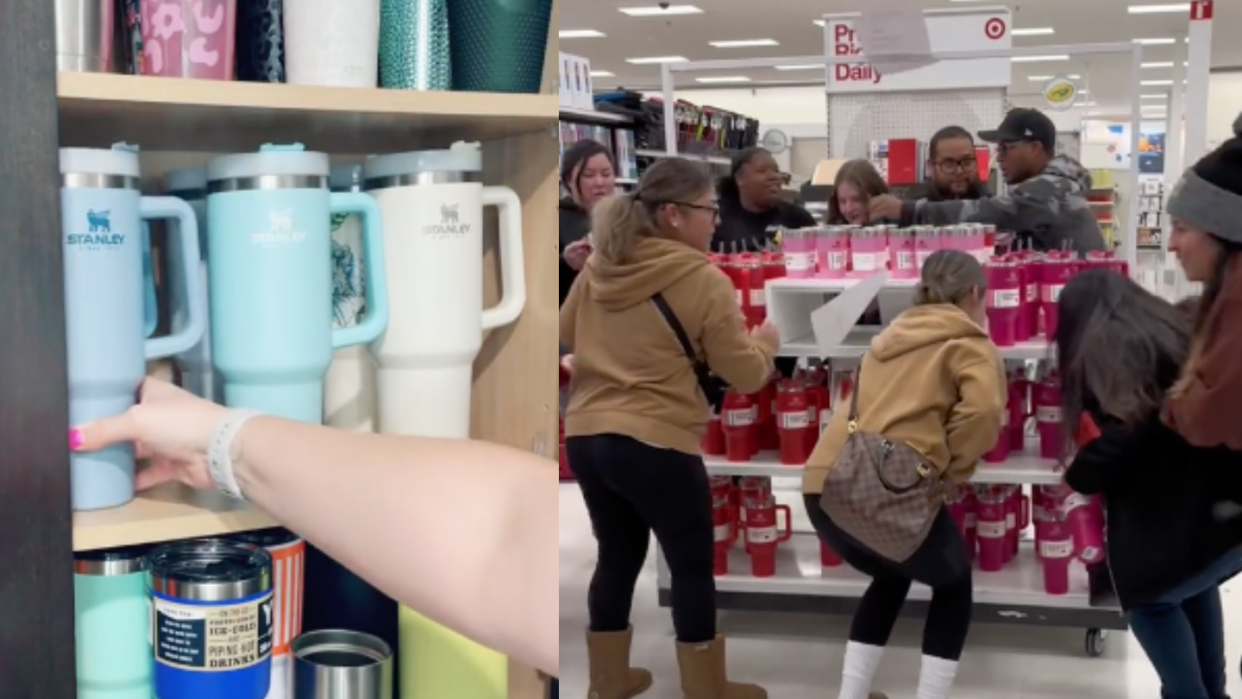Don't Come For Me, But Stanley-Mania Is Getting Out Of Hand

"Hearst Magazines and Yahoo may earn commission or revenue on some items through these links."
Insulated cups have existed for a long time with minimal fanfare, but certain brands have been vaulted into cult-favorite status. Hydro Flask, S’well, and Yeti have all had their time in the sun over the past decade. 2023, however, was decidedly the year of the Stanley.
Stanley may be reaching peak popularity right now, but if you read the fine print on its logo, the brand has been around since 1913. Inventor William Stanley Jr. first created a vacuum-insulated steel bottle in the early 20th century—a product that’s purported to be “built for life.”
And when Stanley advertises its products as durable, the brand's not joking. Stanley tumblers can survive serious damage, including a literal car fire, and still retain their insulating power. So in theory, you’d only need to buy one Stanley tumbler for any and all of your beverage needs. In reality? They’ve become collector's items that are hoarded en masse.
The current darling of its product lineup is the Quencher, a 40-ounce insulated tumbler that was first introduced in 2016. But it didn't immediately become a bestseller; in fact, sales were initially so low that Stanley discontinued the product in 2019.
It was when blogger and cofounder of The Buy Guide, Ashlee LeSueur, convinced Stanley to send her a wholesale order of 5,000 tumblers that the tide began to turn. The Buy Guide readers bought out the entire inventory within days. Stanley capitalized on the hype and collaborated with the blog to drop different colorways and launch the Quencher into online stardom.
Now, four years later, the company's success can largely be attributed to the revival of the Quencher. Stanley's revenue skyrocketed from $73 million in 2019 to a whopping $750 million in 2023.
The release of limited-edition colors and collaborations only fuels the Stanley mania. Yellowstone star Lainey Wilson's shimmery Stanley cups sold out in a mere 11 minutes. Joanna Gaines' lineup of muted, Magnolia-approved tumblers are being resold for hundreds of dollars. 2024 has only just begun and it seems like the Stanley obsession is showing no signs of stopping.
Just recently, Target's exclusive Valentine's Day Quenchers incited Black Friday levels of chaos. A man even hopped behind a Starbucks counter this week to snag a limited-edition pink tumbler. All of this, mind you, for a cup.
When you wade through the depths of #Watertok, you can find users displaying shelves and shelves worth of multicolored cups to match each of their complicated recipes. The vibrant orange “Tigerlily” for a batch of peach ring flavored water. A bold blue “Balsam Glow” for Little Mermaid water. Some people own enough “built for life” Stanleys to last multiple lifetimes.
And certain Watertok users further subvert sustainability by decanting single-use plastic water bottles into their reusable tumblers. The practice resembles Stanley’s sustainable origins just as well as the concoctions of flavored syrups and powders resemble water—poorly, that is.
We’ve lost the plot. Stanley, as a brand, aims to "create a more sustainable, less disposable life and world." But there's little about the culture surrounding its products that reflects the environmental principles that guide the brand.
Let's be real: there's no point to collecting dozens of limited edition tumblers like they're Beanie Babies in the 90s just so they can gather dust on a shelf. Some TikTok users that show off their Stanley collection even keep some of their tumblers in their original packaging, untouched. It's an excessive and, frankly, expensive practice we hope gets left behind in 2024.
You Might Also Like
